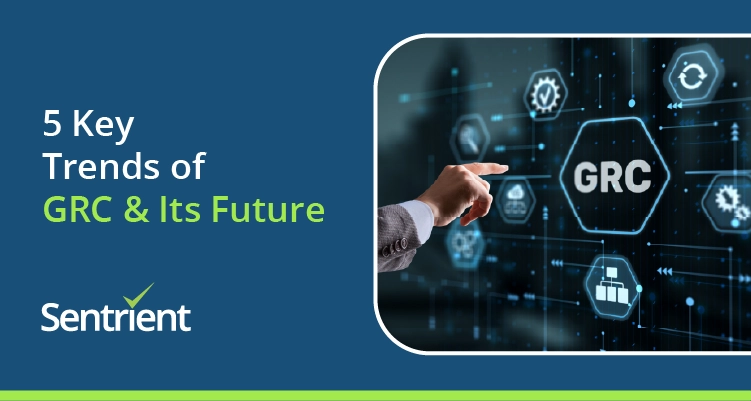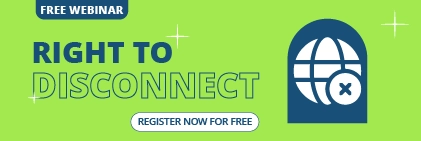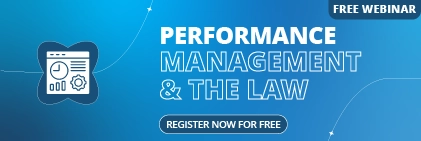Governance, Risk, and Compliance (GRC) have become critical components of Australian businesses, ensuring organisations adhere to regulations, manage risks effectively, and maintain ethical governance. With evolving workplace regulations in Australia, businesses must stay ahead of compliance changes to avoid penalties and reputational impacts.
The increasing complexity of regulations and the rapid pace of technological advancements make it essential for businesses to adopt a defined approach to GRC. Companies that fail to adapt risks may trigger operational inefficiencies, financial losses, and compliance violations.
In this blog, we’ll explore the top five key trends shaping the future of GRC and how Australian organisations can leverage software tools like Sentrient’s GRC system and maintain compliance with best practices.
What is GRC and Why Does It Matter?
GRC refers to a centralised strategy that helps businesses manage risks, adhere to regulations, and fulfil governance standards. It ensures that organisations operate ethically, minimise legal liabilities, and create a transparent business environment.
A strong GRC framework allows businesses to proactively address regulatory changes, ensuring they stay compliant while reducing operational risks. With evolving workplace laws in Australia, companies must adopt a comprehensive GRC strategy to avoid legal complications and maintain business continuity.
For Australian businesses, prioritising GRC means building a resilient and well-governed organisation. Effective GRC practices improve decision-making, raise risk visibility, and create a compliance-driven workplace culture.
Key Benefits of an Effective GRC Framework
- Regulatory Compliance
Ensures businesses adhere to evolving workplace laws and industry regulations, reducing legal risks and avoiding penalties. Companies that comply with regulations avoid fines, legal disputes, and reputational damage, ensuring sustainable operations. - Risk Mitigation
Identifies potential threats early, allowing organisations to take proactive steps to prevent disruptions. By analysing historical data and current trends, businesses can anticipate risks and implement strategies to minimize their impact. - Operational Efficiency
Automates compliance processes, streamlining workflows and reducing the administrative burden on employees. Digital GRC tools enhance productivity by ensuring policies and procedures are updated in real time. - Corporate Transparency
Enhances accountability by promoting ethical governance and clear reporting standards. An effective GRC system provides real-time insights into compliance status, ensuring all stakeholders are informed. - Reputation Protection
Safeguards brand credibility by ensuring consistent compliance with ethical and legal obligations. Businesses that prioritise governance and risk management gain stakeholder trust and maintain a strong market reputation.
Top 5 Key Trends in GRC and Its Future
| Trend | Future Outlook |
|---|---|
| AI and Automation | AI will enhance automated compliance and predictive risk detection. |
| GRC-HR Integration | Workforce compliance will be managed with predictive analytics. |
| Proactive Compliance | AI-driven insights will enable pre-emptive risk mitigation. |
| Cybersecurity & Data Privacy | Stricter regulations will push advanced AI-driven security. |
| ESG Compliance | Businesses will need transparent, verifiable ESG reporting. |
Let’s understand these trends in detail:
1. AI and Automation Reshaping GRC
Artificial Intelligence (AI) and automation are redefining how businesses manage compliance. By automating monitoring and reporting, companies can streamline processes and ensure regulatory adherence with minimal manual intervention.
Predictive analytics powered by AI allow organisations to foresee compliance risks before they escalate. By examining regulatory trends and operational data, businesses can implement proactive measures to mitigate potential issues.
Real-time compliance tracking is becoming a standard feature in automated systems. With self-updating frameworks and instant alerts, businesses can swiftly adapt to regulatory changes and reduce the risk of penalties.
2. Integrating GRC with HR for Workforce Compliance
The integration of GRC with HR management systems is enhancing workforce compliance and policy enforcement. Businesses can centralise employee training, certifications, and regulatory adherence within a single system.
Cloud-based compliance tools offer seamless access to policies and updates across multiple locations. This ensures HR teams can efficiently manage compliance requirements and reduce administrative overhead.
Integrating GRC within HR processes fosters a culture of accountability. From recruitment to daily operations, businesses can maintain a structured approach to regulatory compliance.
3. Moving from Reactive to Proactive Compliance
A shift is occurring from reactive to proactive compliance, where businesses focus on early risk identification rather than damage control. Organisations are adopting real-time monitoring to detect compliance gaps before they become major issues.
Regulatory updates and automated alerts provide businesses with timely insights. This allows them to adjust policies and procedures before new laws take effect, ensuring continuous compliance.
By developing a risk-aware culture, companies can reduce costly violations and strengthen overall operational resilience. Preventative strategies are becoming essential in today’s evolving regulatory environment.
4. Strengthening Cybersecurity and Data Privacy
With rising cyber threats, data privacy has become a crucial component of GRC frameworks. Organisations must align security measures with regulatory requirements to protect sensitive information.
Cyber risk assessment tools help businesses identify weaknesses in their security infrastructure. Implementing encryption, data access controls, and response strategies ensures compliance with evolving cybersecurity laws.
Implementing cybersecurity within GRC strategies not only prevents data breaches but also reduces legal exposure. Businesses must prioritise both security and compliance to maintain trust and credibility.
5. ESG Compliance as a Business Imperative
Environmental, Social, and Governance (ESG) compliance is now a major regulatory focus. Authorities require businesses to disclose sustainability initiatives and ethical governance practices.
Stakeholders, including investors and customers, are placing greater importance on ESG commitments. Companies that embed sustainability into their GRC frameworks enhance their reputation and long-term viability.
By tracking environmental impact and governance metrics, businesses can align with global ESG standards. Ensuring transparency and accountability in sustainability efforts strengthens compliance and corporate responsibility.
How Australian Businesses Can Stay Ahead of GRC Trends
- Automated Compliance Monitoring
Businesses need real-time updates to stay aligned with evolving regulations. Automated compliance monitoring ensures that regulatory changes are tracked and implemented without delays, reducing the risk of non-compliance. - Integrated HR and GRC Systems
Combining HR processes with GRC frameworks streamlines policy enforcement. This integration simplifies compliance training, employee record management, and workplace regulation adherence, improving overall efficiency. - Strong Cybersecurity Measures
Protecting sensitive data is crucial as cyber threats grow. Implementing strong cybersecurity protocols within GRC frameworks helps businesses safeguard critical information while meeting data protection regulations. - Proactive Risk Assessment Tools
Identifying potential risks before they escalate is key to maintaining compliance. Advanced risk assessment tools allow businesses to detect vulnerabilities early, enabling them to take preventative action and avoid costly penalties.
How Sentrient’s GRC Solutions Help Australian Businesses?
To comply with the evolving regulatory landscape, Australian businesses must implement modern GRC solutions that offer automated compliance monitoring, integrated HR and GRC systems, strong cybersecurity measures, and proactive risk assessment tools.
Sentrient’s GRC solutions provide Australian businesses with a complete compliance management system, offering a user-friendly platform with automated workflows, real-time compliance tracking, and seamless policy implementation.
With a focus on regulatory alignment and operational efficiency, Sentrient empowers businesses to mitigate risks, improve accountability, and streamline governance processes and ensure organisations remain compliant with ever-changing Australian workplace regulations.
Conclusion
As GRC advances, businesses must embrace modern strategies to remain compliant and competitive. AI-driven automation, HR and compliance integration, proactive risk management, and effective cybersecurity protocols are important for handling regulatory complexities. Organisations that stay ahead of these trends can build stronger governance frameworks and mitigate compliance risks properly.
Sentrient provides Australian businesses with a complete GRC solution suited to their compliance needs. With automated compliance tracking, risk assessment tools, and seamless HR integration, our platform ensures regulatory alignment without disrupting operations.
Learn more how Sentrient’s GRC solutions can keep your organisation secure and compliant.
FAQs
1. What is a Governance, Risk, and Compliance (GRC) system?
A GRC system is a structured framework that helps businesses manage governance policies, risk assessment, and compliance requirements effectively.
2. How does integrating GRC with HR processes benefit an organisation?
It simplifies policy updates, automates compliance training, and ensures workplace regulatory adherence.
3. What features should I look for in a GRC software solution?
Key features include real-time compliance tracking, automated risk management tools, cybersecurity integration, and incident reporting capabilities.
4. Why is compliance management important for businesses?
Compliance ensures that businesses operate legally, avoiding financial penalties and reputational risks.
5. How can small businesses implement effective GRC practices?
Small businesses can leverage cloud-based GRC solutions, automate compliance tasks, and implement training programs for regulatory adherence.
6. What are the emerging trends in GRC for the future?
AI-powered compliance, ESG integration, and proactive risk monitoring are shaping the future of GRC.
7. What’s on the horizon for top GRC trends in 2025?
Increased regulatory scrutiny, AI-driven compliance automation, and stronger ESG mandates are expected to shape GRC strategies.
8. What is the new issue that GRC is facing?
Rising cybersecurity threats and complex global regulations are presenting new compliance challenges for businesses.
9. Is GRC entering a new era?
Yes, digital transformation and evolving regulations are pushing GRC into a more automated and data-driven era.
10. What are the drivers of change in the GRC industry?
Technological advancements, stricter regulations, and growing stakeholder expectations are driving change in GRC.
11. How do organisations prepare for the GRC challenges of the future?
Businesses must invest in modern GRC solutions, enhance risk management strategies, and stay informed about regulatory changes.
12. Why choose Sentrient’s GRC solutions for your business?
Sentrient provides user-friendly, automated GRC solutions specific for Australian businesses, ensuring compliance and risk mitigation.






